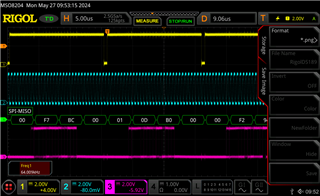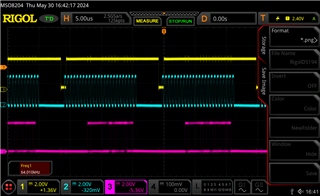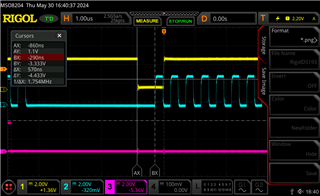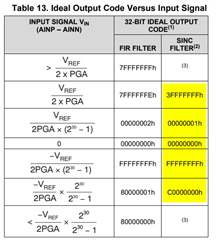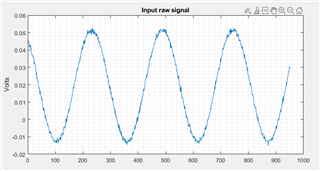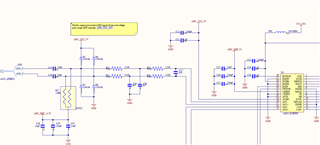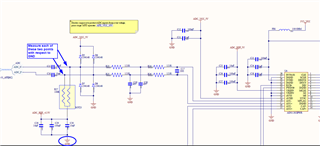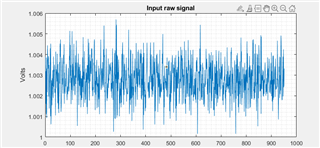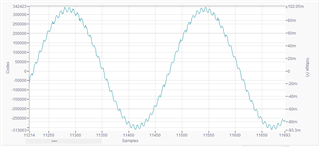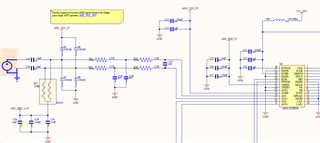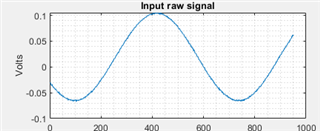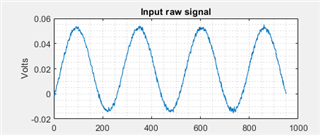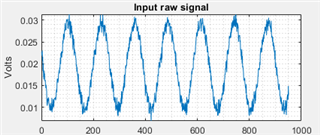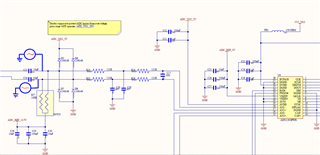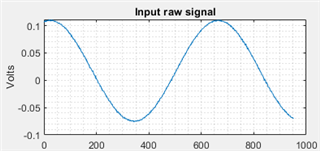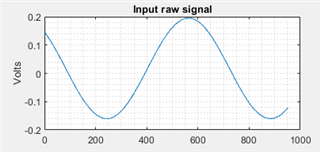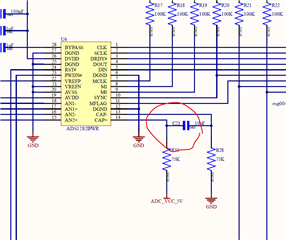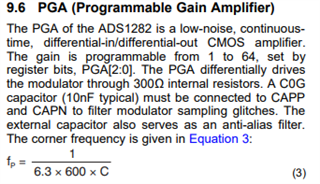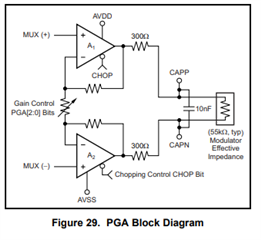Tool/software:
Hello,
We are using ADS1282 and would like to estimate base line (noise floor) and having issues with output data.
Hardwire configuration:
ADC reference set to 5V DC
AIN1+, AIN1- is connected via 121R to 2.5V reference voltage
ADC clock set at 4.096MHZ
Software Configuration
Config 0 register is configured to 0xD9
D7 1 continuums SYNC mode
D6 1 reserved
D5:D3 001 64KHZ data rate Table6 page 18
D2 0 Linear phase
D1: D0 01 Sinc Filter is selected
Other registers left at default state
When reading 32 bit data , we expecting data to be near 0 , according to the table 13 page 26 data sheet,
but we are getting relatively large noise floor, please see attached scope plot. Yellow line is ADC RDY ; blue SPI CLK; magenta is SPI Data Out from ADC.
Could you please advise what can be wrong?
Thank you,
Iouri